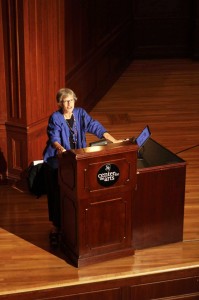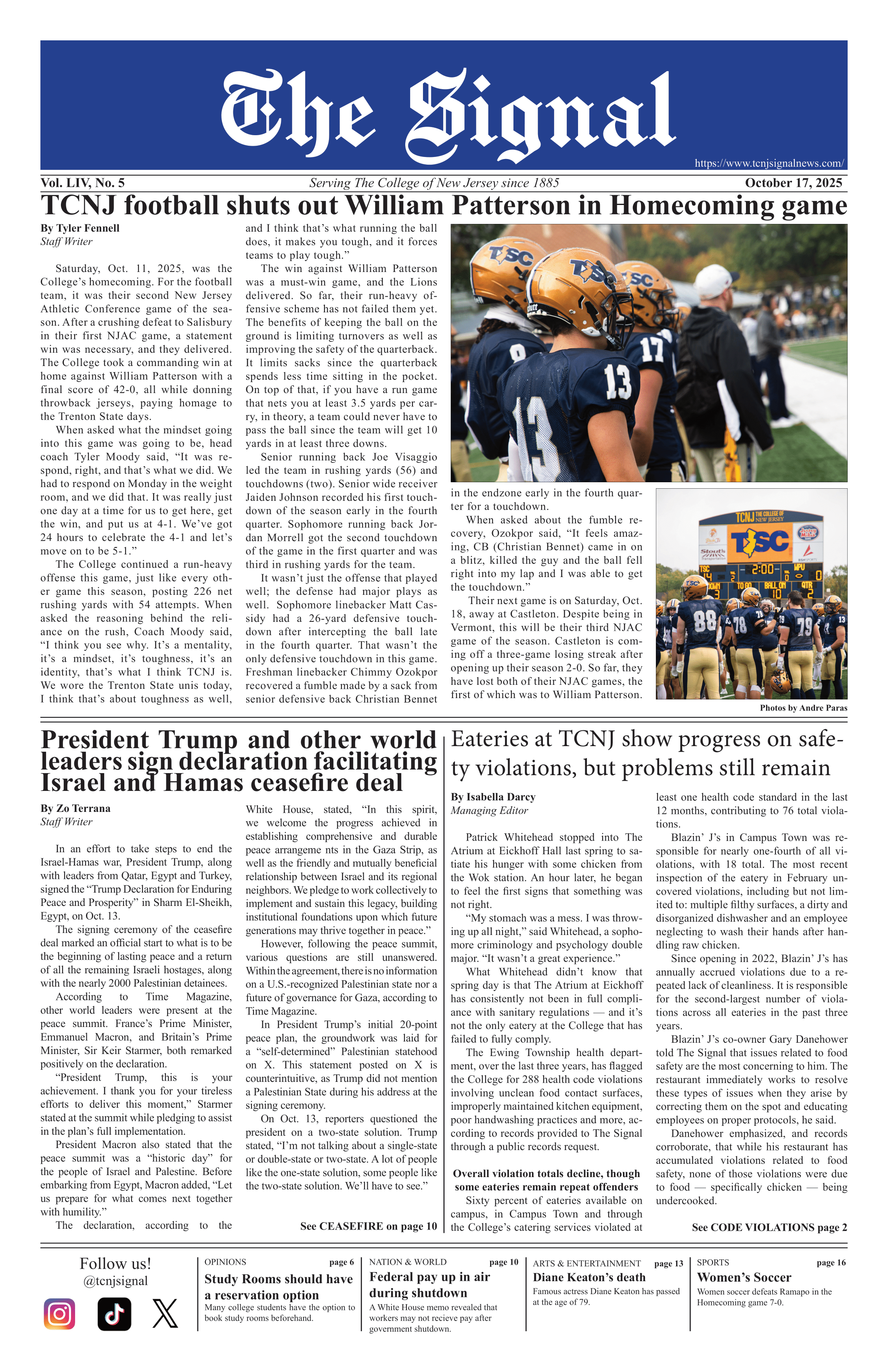By Hillary Siegel
Correspondent
When people think about World War II, they often think about the Holocaust. And thoughts that come to mind about the Holocaust are typically about concentration camps, yellow stars and the persecution of the Jewish population in Eastern Europe. But in Atina Grossman’s keynote lecture “Remapping Death and Survival: Flight, Displacement, and International Aid for Jewish Refugees during the Holocaust,” it was clear that there was much, much more to it than that.
Grossman is a history professor at the Cooper Union, who, after studying 20th century European history, decided to delve further into the past of Nazi-occupied Germany. She researched the unknown sides of WWII and the Holocaust, including the sites of refuge and relief for Polish Jews who managed to escape the Nazi’s persecution. Since the College’s liberal learning theme this year is “Freedom and Tyranny,” it was only appropriate to feature this installment of “Envisioning Europe: Tyranny and Freedom in History, Literature and Film” on Thursday, Sept. 13 in the Mildred and Ernest E. Mayo Concert Hall.

Grossman traveled to New York City, Washington, D.C. and Jerusalem while researching this history, gathering all of the photos used in her lecture at the Holocaust museum in D.C. She began speaking by mentioning what the Jews would refer to as the “cursed bloody soil” of occupied Germany during WWII, and how they escaped it.
After the German invasion of Poland in September 1939, some Jews from Poland were brought to the Soviet Union to avoid the terrors of the Nazis, Grossman said. However, some Jews were immediately forced into labor camps and deported elsewhere into newly Sovietized areas, and wanted to go back to Poland. A lack of kosher food combined with panic and an unclear national identity caused uncertainty over whether or not they should have fled. Some who tried going back to Poland were turned away at the border — this turned out to be their best chance for survival.
The Jews continued to be deported from 1940 to June 1941. They were brought to the Soviet interior and were integrated into Soviet schools and jobs, according to Grossman’s lecture. Approximately 700,000 Polish Jews escaped extermination by going to Siberia, and although their conditions weren’t good by any means, they had it better than those still in Poland. They were essentially treated as Soviet citizens.
In the summer of 1941, Stalin and the Soviets negotiated amnesty with Poland. Within the agreements came the formation of a Polish army and the release of Polish citizens from the Soviet Union. The freed deportees rushed south, but when they reached central Asia they were faced with disease, poverty and hunger. By 1942, the Polish government was minimally supporting the Jews.
The Jews were slowly deported to places such as Teran, Palestine and farther east into Asia. Grossman shared how American Jews and their organizations tried to help, sending over 10,000 packages of supplies to the Jews each month.
Approximately 220,000 Polish people returned on trains in 1946. Because they had been in countries far from Poland, they were part of the 10 percent of Polish Jews who managed to survive WWII. Those 220,000 people accounted for almost 80 percent of all people who survived, Grossman said. So, the great majority of survivors came not from concentration camps, but from the wartime Soviet Union.
Brittany Hamilton, sophomore history and secondary education major, was surprised by these statistics. “I love studying the Holocaust, and I had no idea any of this had happened,” Hamilton said. “A lot of people think ‘Holocaust’ and only think of Germany or Poland, but it really is a melding of different cultures.”
Grossman emphasized multiple times in the lecture that “the experience of survival encompasses other parts of the globe we don’t normally think about,” and that it is truly a transnational history, not just centered in Europe. When you put all of the different stories of survival together, she said, “you get the stories from Poland, Germany, the Soviet, Iran … but it will never be just one story.”






